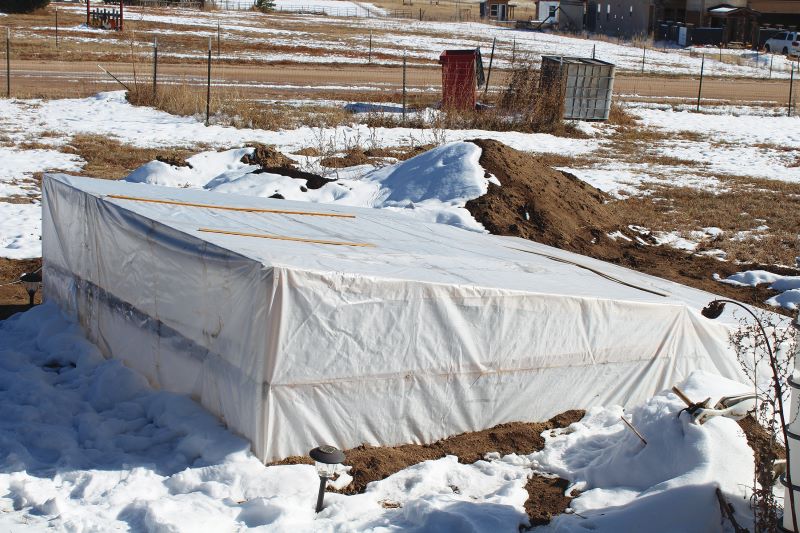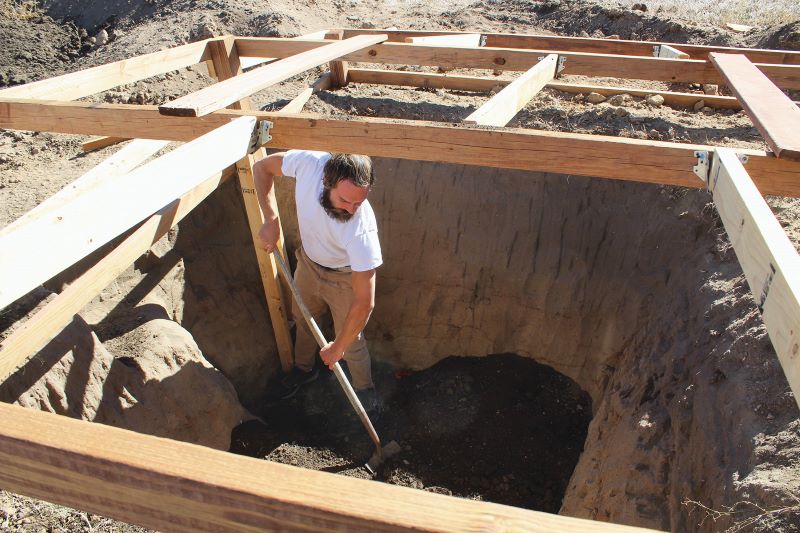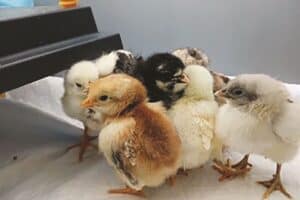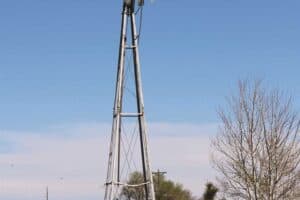Winter gardening down under
That’s not the end of the story when it comes to gardening, though. Our son, Ryan, who has always had a green thumb, suggested we garden through the winter with an underground garden. Over the summer, he started working at Ahavah Farm, the “beyond organic,” regenerative farm in the Peyton area, and was inspired by its four-season CSA (Community Supported Agriculture). It’s able to grow produce throughout the year, thanks to its hoophouses and the power of the sun. (The sun heats up the soil during the day; at night, the plants are covered and the soil retains that warmth.)
A couple of months ago, I wrote about the success of our summer gardening season.
Instead of that approach, though, Ryan was intrigued by the remains of an underground greenhouse (also known as a pit greenhouse or walipini) at the farm. As Morningchores.com explains, a walipini “is a structure with the growing area dug into the ground. Having the growing area under the ground level gives you the thermal benefits of being cool in warm weather and warm in cold weather, similar to a root cellar. … Unlike a root cellar, though, you’ll be putting a greenhouse top on your dug-out space. That will allow the sun to come into the area and make it even warmer.”
The walipini at Ahavah Farm was hand-dug at a size of 15 feet by 10 feet and 5 feet deep. It was used mostly as a starter house for new seedlings, says Yosef Camire, who founded the farm with his wife.

“We don’t use the walipini any longer because it got destroyed in a storm and we never rebuilt it,” he explained in an email. “As time went on, we outgrew it and decided that rebuilding it was not a good option for us. However, that doesn’t mean it wasn’t fantastic and that I would recommend against it. The average temperature was considerably more stable than any of the greenhouses above ground and this meant a much better growing environment for the crops. In the summer the temperature was about 20 degrees cooler than above ground and in the winter it was about the same difference in the opposite direction.”
The first step for us: the hole. We were going to ask a neighbor to use his tractor to dig it for us, but instead Ryan got digging one weekend by hand and by the end of day two, with the dirt flying, the hole was basically finished. It’s not near as big as the walipini was at Ahavah Farm; our pit is perhaps 8 by 6 feet and 4 ½ to 5 feet deep. It looks a lot bigger because the greenhouse frame I built above it is 10 by 12 feet. That’s because we have the frame resting on top of the ground rather than sunk into it; we didn’t want to build a permanent structure without knowing how things would go. If it is a success, we might start all over with a bigger hole next year at a different spot and use the original hole for a fish pond.
My job was to build the wooden frame. After doing so, we covered it with the remains of the cover from our once-mammoth greenhouse that we abandoned after our prairie winds shredded each end of it. (Yes, we’re persistent in our garden efforts, though not always successful.) We originally planned to build stairs for easy access; instead, we just have one step down and basically slip into the hole and then hoist ourselves back up.
We covered the bottom of the hole with rabbit poop from our own bunnies, potting soil and well-rotted cow manure that we get from a guy in Black Forest. The narrow pathway at the bottom of the hole is lower than the soil level, so ideally any cold air will collect there. (Hot air, of course, rises while cold air sinks.) We’re focusing on cold-hardy plants for the most part, so we have planted radishes, beets, turnips, dill, fennel, leeks and mint; some of that is growing in holes that Ryan dug into the walls. Everything pretty much has sprouted and seems to be prospering.

Whether everything will survive the worst of winter is, of course, an unknown — though at the time of this writing, we have been through one fairly severe, if short, cold spell and the seedlings didn’t suffer. Mother Earth News cautions that the walls of a walipini should be insulated, as “soil is actually a relatively poor insulator.” It actually recommends installing rigid sheets of foam board insulation between the greenhouse framing; that, of course, wouldn’t work for us since we didn’t extend the framing into the ground. Another source recommends deploying an insulative blanket at night over the roof to hold warmth in.
We recently got one of those home weather stations with multiple sensors that you can distribute in spots outdoors; we placed one sensor in the walipini and are monitoring the temperature there. While it does get warmer — and stays warmer — than the overall outdoor temperature, the difference isn’t as dramatic as we expected.
So we’ll see what happens. If it turns out to be a gardening disaster, there are some fish out there somewhere who could have a new home next summer.
Photos by Bill
Prairie Life 1: The top part of the underground greenhouse is a walipini.
Prairie Life 2: Ryan Radford does some final digging for the underground garden, as seen through the frame of the greenhouse topper.






